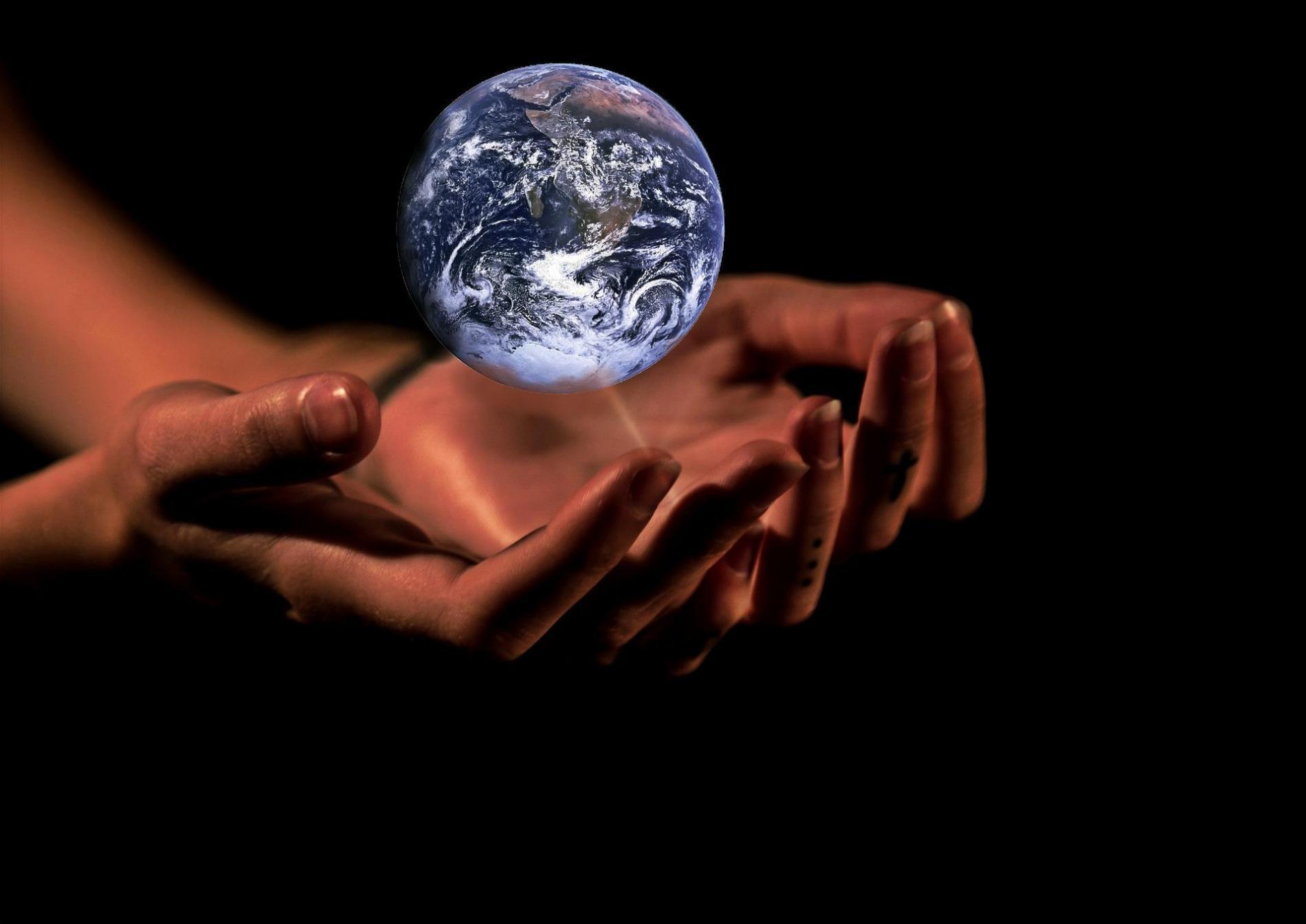
Climate change
Torrential rain, extreme heat, a snow storm in Madrid... Sounds familiar? If we don’t take action now we’ll hear more of the same. How can small steps change the path we are on to the destruction of the only planet we have? Read what YOU can do.
We are inundated with information about global warming and climate change. More and more often we observe disturbing atmospheric phenomena such as torrential rain and floods, which increase with each year. More and more frequently we hear about disasters afflicting huge areas, fires in California and Australia, floods in Germany and Belgium are recent examples that we probably have fresh in our memory. They were brought about by record temperatures and the related droughts or unprecedented amounts of rainfall.
Taking the fires in Australia as an example, dozens of people died, as many as 3 billion wild animals suffered, and the fire spread over huge areas, almost the size of the Czech Republic and Slovakia combined! Many people have lost their possessions and animals have lost their natural habitat. Among the animals most affected by wildfires are koalas, for example, which are not found anywhere else in the world. According to WWF-Australia, over 60,000 of them died. Although this species has been under protection since 1927, it’s possible that it will become extinct within the next 30 years.
The taigas of Siberia also burn every year, glaciers are melting at a record pace, and more and more frequent cyclones are wreaking havoc... The effects of climate change can be observed not only in remote parts of the world, but also in Europe and North America. From year to year, summers seem to be getting hotter, we struggle with droughts alternately with violent storms and tornadoes. In winter we see snow less often, because the temperatures drop only slightly below zero. Not so long ago, during the winter period, snowdrifts and severe frosts were commonplace. Each year, new records for the highest monthly temperature are broken around the world. The international media is sounding the alarm "Let's start acting before it's too late!". Fortunately, general knowledge about climate change is growing, and more and more ordinary people often follow celebrities, politicians and artists in promoting environmental activities. In New York, a clock, which until now showed the real time, has begun to count down to the climate catastrophe. This is the so-called "zero hour", i.e. the moment when the average temperature on Earth has risen by 1.5 °C. Not only will we be threatened by droughts or strong cyclones, but we will also face problems with food production, and thus migration and possible conflicts over inhabitable areas. In September 2020 the clock displayed exactly 7 years and there is an online version to see the current time we have left available at https://climateclock.world.
The greenhouse effect?
This effect is a gradual rise in the temperature of Earth due to greenhouse gases, such as water vapour, carbon dioxide, methane, ozone and all kinds of industrial gases, present in our atmosphere. They come from numerous natural sources, but they are also produced by human activities. The greenhouse effect is a natural process of temperature regulation. Thanks to it, various life forms have developed on the planet. Without it, the temperatures on Earth would simply be too low. Unfortunately, the greenhouse effect is increasing year by year. This is mainly due to the increasing amount of carbon dioxide and methane in the atmosphere. Carbon dioxide is released naturally (even during breathing), but the majority of it comes from the combustion of fossil fuels. A significant source of methane is industrial pig and cattle farming. Other gases that have a great influence on global warming are gases generated during industrial processes. One of them is freons, which are used in the production of deodorants and in the automotive industry. In addition to their influence on the greenhouse effect, they also contribute to the destruction of the ozone layer, which protects us from harmful UV rays that can cause skin diseases and reduced immunity.
Global warming and its effects
Global warming is actually the result of the increasing greenhouse effect. It is causing the average temperature on Earth to keep increasing. If the temperature on our planet increases by 1.5 °C compared to the pre-industrial era there will be serious consequences. This might seem like a small difference, but once this so-called "safe" limit is exceeded, temperatures will start to rise at an ever faster rate. If the temperature rise is 2 °C, the consequences will be catastrophic. First of all, heat waves will appear, not only in the equatorial regions of the globe, but worldwide. High temperatures will accelerate the process of water evaporation and, combined with low rainfall, will lead to long-term droughts and shortages of drinking water. It will also greatly harm crops, which in turn may contribute to migration in search of better living conditions, and ultimately to possible conflicts over access to water. Many animal species that lose their natural habitat will also disappear. The increase in temperature will also contribute to the rapid melting of glaciers and consequently raise the sea level. This will pose a threat to the inhabitants of coastal regions that will be permanently flooded. As a result of the increase in temperature coral whitening has also occurred, which has disrupted the entire marine ecosystem.
As you can see, the forecasts are not very optimistic, and these are just a few of the possible effects of global warming. However, we still have the ability to stop climate change or at least slow it down.
What can we do?
Above all, energy production from fossil fuel combustion must be reduced. Instead, we should focus on obtaining energy from renewable sources such as wind, sun, water or even hydrogen. Although such a change is largely the task of the state, public pressure may accelerate this process. Without waiting for a global green transition, we can already do a lot for our planet and the generations to come. Each of us can reduce our carbon footprint, which is "the sum of greenhouse gas emissions produced by one person, organization, event or product". Difficult though it may seem, it is not too great a challenge. It is enough to:
1. Reduce the use of plastic and man-made materials
When going shopping, take your own cloth or paper bags with you instead of buying a new plastic one every time. Let's try to choose stores where it is possible to put loose goods (such as flour or rice) into your own containers. We should not buy products in cans or plastic bottles. Choose those that are in glass bottles, and if possible, drink tap water without producing unnecessary waste. Apart from that, let's also remember to segregate rubbish!
2. Choose local products
Try to buy and eat local products. Because they do not need to be imported from distant countries, less greenhouse gases are emitted during transport.
3. Limit meat consumption
Raising animals for meat production gives off a huge amount of greenhouse gases, so it is important to eat a diet richer in vegetables. There are many products that provide us with the same amount of nutrients as meat, such as beans, chickpeas, lentils or even almonds. However, if we cannot imagine a dinner without the taste of meat, we can use various substitutes which look and taste similar to meat products. These are increasingly available in supermarkets. You do not have to completely exclude meat products from your diet, but think about reducing your consumption.
4. Leave the car at home
If possible, choose public transport. In this way, we will share the distance travelled and the carbon footprint between all passengers. If, for some reason, we cannot or do not want to travel by public transport, we can cycle or walk. This not only takes care of the planet, but also our health and fitness, and saves some money at the same time! And it can also be quicker. ;-)
5. Use the things we have for as long as possible
Instead of constantly buying new clothes, let's wear the ones we already have, and when they wear out, try to reuse them and give them a second life. Currently, we can buy second hand items not only in high street stores, but also on many websites and with mobile apps. One such application is Vinted, where we can both sell our unworn clothes and buy something for ourselves. Recently, such sites have been gaining more and more popularity. The same is true for furniture and even electronic equipment. Instead of buying newer and "more fashionable" ones, let's try to maintain, repair and restore what we have. I promise you, it will give you great satisfaction!
6. Reduce the consumption of water and heat
Let's take shorter showers, turn off the water while brushing our teeth, turn off lights when we leave rooms, and reduce the central heating temperature by at least 1 °C or increase the air conditioning by the same amount. While these are not large sacrifices, our planet will surely be relieved.
These are just a few examples of what we can do to take care of the Earth and future generations. It is up to all of us together as a group, but also as individuals, to decide to take responsibility to keep the Earth a friendly place to live...
[2] WWF-Australia, Impacts of the unprecedented 2019-20 bushfires on australian animals, tab.3, November 2020.
Popularne Posty






